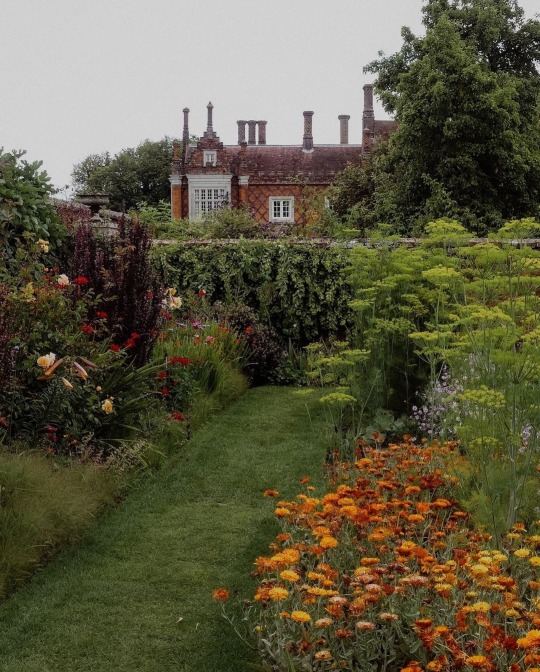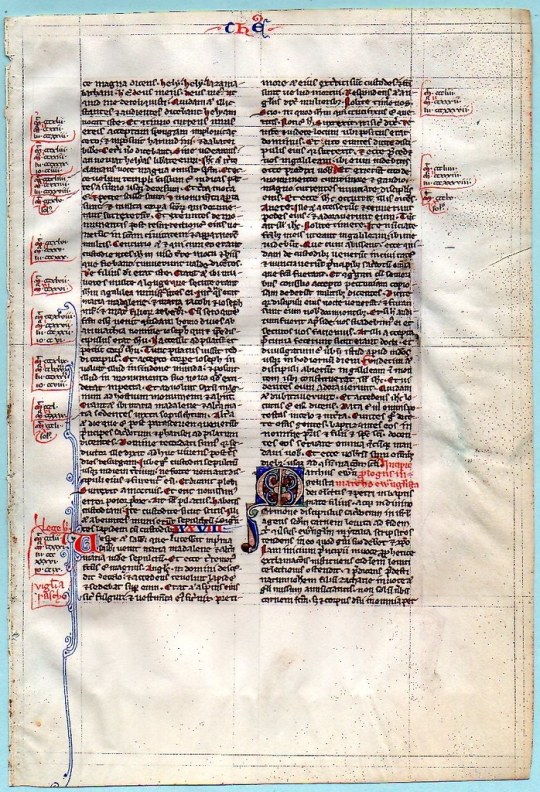#helmingham hall
Explore tagged Tumblr posts
Text
Helmingham Hall Car Show 2024 - (Part 2)
After lots of walking around the club stand field and watching the exhibition runs, we wandered over to the privateer field. There was a Ford main dealer showing some cars and some food stalls. We decided to go back to my car for a regroup and something to eat and drink as the smell of the food had made me hungry. There was a brass band hiding under a tree near the main dealers who were playing…
#Car photography#car show#Classic Car Photography#classic car show#ford#ford mustang#Helmingham Hall#Helmingham Hall Classic car show 2024#Mustang#One man and his Mustang#onemanandhismustang.com#rain
0 notes
Text
The Private Gardens of England :: Edited by Tania Compton

View On WordPress
#978-1-4721-2101-1#books edited by tania compton#british gardens#cothay manor#eaton hall#english country gardens#farleigh house#first edition books#garden design#garden designers#gardens england#gresgarth hall#hatch house#helmingham hall#hilborough house#historic gardens#historic houses#historical gardens#history gardens#petworth house#renaissance gardens#trematon castle#wychwood manor
1 note
·
View note
Text






Helmingham Hall Gardens
#nature#naturecore#nature photography#flowers#wild flowers#flower photography#flower garden#aesthetic#light academia#botanical garden#secret garden#garden design#garden inspiration#home and garden#academia aesthetic#gardens#english garden#english countryside#enchanting#relaxing#pretty things#outdoor design#landscape photography#landscaping
91 notes
·
View notes
Photo

Moated surrounds Helmingham Hall
54 notes
·
View notes
Text


Ex-GWR ‘Hall’ Class 4-6-0 No 6947 ‘Helmingham Hall’ in ex-works condition outside its birthplace, Swindon Works, 24 November 1963. Built at Swindon Works in 1942 this loco was withdrawn from Oxford shed in November 1965 and scrapped.
Photo credits: Julian Holland
BRITAIN’S STEAM LOCOMOTIVES
From Penydarren to Tornado
It is now over 200 years since the world’s first steam railway locomotive made its maiden voyage along a primitive plateway in South Wales – in 1804 Richard Trevithick’s high-pressure steam locomotive successfully hauled a loaded train a distance of nine miles at an average speed of just over two mph. Only 25 years later Robert Stephenson’s Rocket won the Rainhill Trials in Lancashire with a top speed of nearly 30 mph. With Britain leading the way the evolution of the steam locomotive continued unabated through the 19th and into the 20th centuries, culminating in Nigel Gresley’s streamlined Mallard which still holds the world record for steam railway locomotives of 126 mph that was set in 1938.
Although steam haulage on Britain’s nationalized railways ended in 1968, the British public’s love affair with these living mechanical monsters continues unabated – steam haulage on the country’s national rail network and heritage railways is now a regular feature with packed trains being hauled by lovingly restored locomotives that were saved from the scrapheap some decades ago. Britain’s love affair with steam is set to continue.
Written by bestselling railway author Julian Holland, Britain’s Steam Locomotives is a fitting memorial to over two centuries of British steam locomotive design.
7 notes
·
View notes
Text
Shotley peninsula: Date Announced for Suffolk Dog Day | Local News | News | Shotley Peninsula Nub News
New Post has been published on https://petn.ws/r9E6e
Shotley peninsula: Date Announced for Suffolk Dog Day | Local News | News | Shotley Peninsula Nub News
St Elizabeth Hospice has revealed the date for this year’s Suffolk Dog Day, which will be once again held at Helmingham Hall. Sponsored by Gladwells Pet & Country Store and SkinnersSuffolk Dog Day 2024 will take place on Sunday 8th September. Suffolk Dog Day 2024 will feature a range of fun dog classes, dog agility and […]
See full article at https://petn.ws/r9E6e #DogNews
0 notes
Photo

Helmingham Hall from Lady’s Fashionable Repository for 1809
1 note
·
View note
Text
Inside a Walled Garden
By Mark Beech
The brightest colours hidden in a box,
this modest beauty is wrapped for pleasure.
Locked behind bricks of imagination,
these leaf walls curtain away their treasure.
.
Like violet lining under grey bespoke,
this dress has floral shocks to uncover.
Sunflowers and hedges reach for the sky,
this lush garden for a lusty lover.
.
Helmingham Hall
2017




2 notes
·
View notes
Photo




Helmingham Hall Gardens by Polly Florence
817 notes
·
View notes
Photo

Helmingham Hall John Bell
147 notes
·
View notes
Text
Helmingham Hall Car Show 2024 - (Part 1)
One of the biggest car shows that I attend is this show, Helmingham Hall. The show was on the 4th August 2024, once again I had the pleasure of my good friend Craig (another total petrol head) to join me. The day was an early rise for Craig who had to travel from the next county to my house which was around forty minutes including his fuel stop. He assures me that he was within the speed limits…
#car show#Classic Car Photography#classic car show#ford#ford mustang#Helmingham Hall#Helmingham Hall car show 2024#Helmingham Hall Classic car show 2024#Mustang#One man and his Mustang#onemanandhismustang.com#poodling along
0 notes
Text







Plant of the Day
Monday 31 May 2021
In this sunny border at Helmingham Hall, Suffolk, UK, the rhizomatous perennial Iris 'Sable' (bearded iris) was starting to flower. The plants have fans of sword-shaped leaves and fragrant flowers with deep purple standards, very dark purple falls, and orange-tipped, purple beards. One clump of plants was by a very large snail, thankfully it was a topiary Taxus baccata (yew).
Jill Raggett
#iris#irises#purpleflowers#plants#writtledesign#gardens#horticulture#garden#perennial#rhizomatous#rhizome#sunnyborder#walledgarden#topiary#taxus#yew#helminghamhall#suffolk
116 notes
·
View notes
Photo

Louisa Manners Tollemache, 7th Countess of Dysart (2 July 1745 – 22 September 1840) was a peer in the Scottish peerage in a flourishing family. Her father held considerable estates in England largely due to the two marriages of Elizabeth Maitland, Duchess of Lauderdale, earlier Tollemache, earlier Murray. Her elder brothers left no surviving issue on their deaths which enabled her to enjoy and help to pass on to her descendants the key family settlement properties: Helmingham Hall and Ham House in England.
7 notes
·
View notes
Photo

BIBLE LEAF Ref 588 recto by RMGYMss. https://flic.kr/p/2hFEgPq This is a superb leaf with a historiated initial from a Bible that was produced in France (Paris) in the middle of the thirteenth century. The text begins in chapter 27 of the Gospel of Saint Matthew in verse 4 and continues to the end of that Gospel. Then follows the Prologue to Saint Mark's Gospel beginning “Marcus evangelista dei electus et Petri in baptismate filius” and Saint Mark's Gospel itself from the beginning to in verse 34. The size of the leaf 199200mm x 136mm (7 8/10ins. x 5 4/10ins.). There are a significant number of marginal glosses, two of which are unusually in red and most of which are enclosed by red lines. IT IS INTERESTING TO NOTE THAT THE MAJORITY OF THE GLOSSES ARE REFERENCES TO THE EUSEBIAN TABLES. PURCHASE DETAILS: - Purchased from Griffon’s Medieval Manuscripts, October 2019. GENERAL COMMENTS This is a nice leaf on thin vellum that is in overall good condition. It has a wonderful historiated initial and it must have been from a good quality pocket Bible. Ref 397, Ref 398, Ref 403, Ref 502, Ref 587, Ref 588 and 589 are all from the same Bible. PROVENANCE: - It has been established that the above leaves are from the Bible that was lot 72 in Sotheby's London sale of Western Manuscripts and Miniatures on 1st. December 1998 and which was described there as “Bible, in Latin, with the Interpretation of Hebrew Names, illuminated manuscript on vellum (Paris, mid-thirteenth century ) Est. £12,000-18,000. It sold for £35,000 plus buyers premium of £5,000. The catalogue description included the following provenance information: - (1) In England in the Middle Ages, presumably in East Anglia. Notes on the second flyleaf are apparently signed “J. Doys”. Above that is an ownership inscription in a fifteenth-century hand, “John Paxten doone thys bok”. Paxten is an acceptable varient of Pasten, and the manuscript might have belonged to the celebrated Suffolk family of letter-writers, perhaps John Paston (1421-1466), legal advisor to Sir John Fastolf, or to either of his sons, both called John. The elder son, John Paston II (1442-1479), had a notable library of Middle English books, including a manuscript of Chaucer and a very early copy of Caxton.s Game and Playe of Chess, and in January 1475 he bought for 20s.6d. The library of the family chaplain, James Gloys (d.1473), which must have included a Bible (N.Navis, Paston Letters and Papers,I, 1971, pp.516-8 and p.373). (2) The library of Helmingham Hall, Suffolk, the house of the Tollemache family built in 1510. There were already manuscripts at Helmingham before the Reformation, and many others were gathered in from local East Anglian collections by Sir Lionel Tollemache, who succeeded his father in 1575 and died in 1612. His grandson, the third baronet (1624-1669), was created first Earl of Dysart in 1643. The present manuscript was rebound for the fourth Earl of Dysart (1708-1770), after his succession in 1727. It has the Helmingham shelf label L.J. II.14 (changed in pencil to IV.14); the brief list of Helmingham books by the Historical Manuscripts Commission, I, 1874, Appendix, p.61, refers to “several splendid MSS. Of the Bible”. It probably remained at Helmingham until the 1950's when a number of private sales took place, mostly through the Robinson brothers. (3) Lord Wardington, with his gilt bookplate inside the lower cover. (4) The property of the Comites Latentes Collection, Geneva, MS.203, bought at Christie's, 8th. December 1982, lot 139. INFORMATION CONCERNING THE ILLUMINATION: - The Sotheby's catalogue description included the following about the Bible's illumination: - Although the book was used in England, it was almost certainly illuminated in Paris. The miniatures are characterised by tiny figures, bright colours – including pale green and orange – and gold highly burnished to a mirror finish. The styl is that of the SOISSONS ATELIER, as defined by R. Branner, Manuscript Painting in Paris during the Reign of Saint Louis, 1977, pp.77-8 and 216-7, a workshop which evidently specialised in the illumination of Bibles. It takes its name from a Bible now in Soissons, ms.63. A notable feature of the present Bible is that at least 35 of the historiated initials preserve guide sketches for the artist, little thumbnail diagrams in plummet in the margins to indicate the subjects to be drawn. They were intended to be erased, and sometimes there are shadowy marks of erasure. This is as addition to approximately 30 manuscripts recorded with such marks by J.J.G. Alexander, Medieval Illuminators and their Methods of Work, 1992, pp.184-185. The sketches occur on fols.47v (although the miniature is cut out, the sketch clearly represents God talking to a horned Moses), 74v, 119v, 132r, 155r, 172v (rather faint),177v, 186r, 196v, 209r, 211r, 213r, 217v, 222r, 227r, 238r (faint), 243v, 275v, 294v (faint), 298v, 316r, 325v, 326v, 328r, 328v (partly erased), 333r, 334r, 334v, 337v, 338v, 357r (faint), 401r, 415r, 420r and 434r. ATTACHING THE LEAVES IN THE COLLECTION TO THE FOLIOS IN THE BIBLE: - REF 397 Folio 337v, Malachi preaching to two(?) men. This is a miniature for which there is a sketch. It is very faint and can only just be seen. REF 398. Folio 222r, Christ blessing. This is a miniature for which there is a sketch. REF 403. Folio 243v, Ecclesia holding a chalice. This is a miniature for which there is a sketch. REF 502. Folio 298v, Ezekiel dreaming of the man, ox eagle and lion. This is a miniature for which there is a sketch. REF 587. Folio 432r, Saint Peter with key. This miniature does not have a sketch. REF 588 Folio 368v, Saint Mark with his Llion. This miniature does not have a sketch. REF 589. Folio 332r, Habakkuk. This miniature does not have a sketch.
1 note
·
View note

